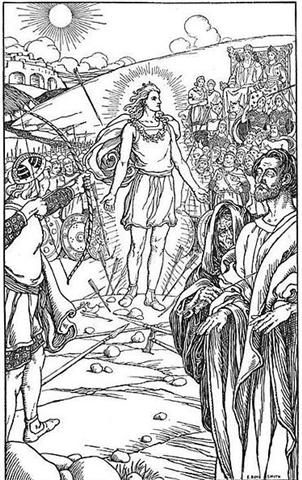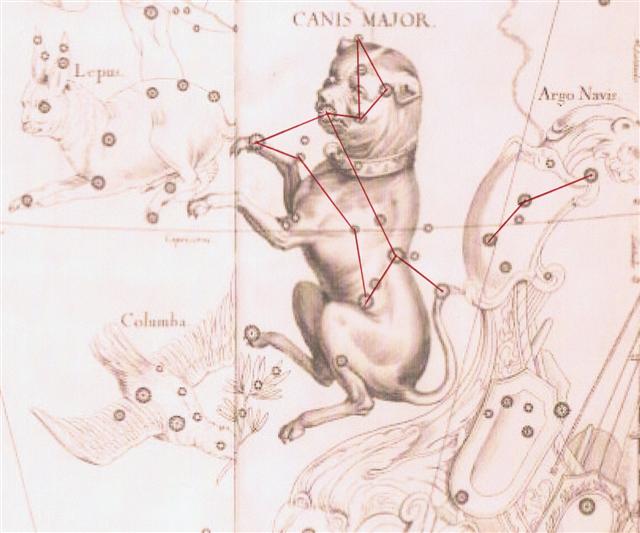The end of a year which is beginning in early January should be late in December:
Possibly the first glyph in line Ca11 does not belong in the new year. Inoino has a reversed (= in the past) mata at the top while inoino in January 1 has 3 mata in front. We can guess 3 in front could be a sign of good luck for the new year. Metoro said te tagata ('fully grown') at December 30 (364), which could mean he there saw the end of a well ordered year. 364 = 2 * 182 = 4 * 91 = 28 * 13 = 14 * 26 = 7 * 52. In rongorongo times Sirius was invisible when rising with the Sun in June 30 (181) and the following day was day 364 / 2 = 182 = July 1. Half a year later, in late December it was the opposite, with Sirius visible close to the Full Moon in the night. There are only 9 days in Qalb al Akraab and the end of this exceptionally short manzil coincides with day 185 (July 4) - given that the Arabic manzils are understood as the night stations of Moon. A third Rogo arrives in January 12:
There are 13 days from Rogo in July 1 (182) to Rogo in July 14 where in the manzil calendar the first pair of lunar synodic months are ending, 2 * 29½ = 59 (Heka 6) and 59 - 46 (Al Tuwaibe' 6) = 13. Inoino with no mata in Ca11-11 is located 295 (= 10 * 29½) days after March 21. This is the night when Castor, the mortal of the Gemini twins, was close to Moon. Rogo in July 4 (given a nakshatra reading of the text) has a closed fist in front, which could mean 'no finger as yet used up', i.e. be a sign of where a new counting should begin. Perhaps this Rogo refers to the Sun in contrast to the pair of Rogo 'twins' 13 nights apart, which could refer to Moon. With no fingers as yet used up it agrees with manzil day number 231 because this is equal to the number of the first glyph on side b of the G tablet. The midpoint between the twin Rogo figures is not far from 19h after March 21 (given a heliacal reading of the text):
The 'End of Land' could in July 5 be observed in the night from the positition of Nunki (Eridu, σ Sagittarii) being close to Moon. In the following night Moon would be at 19h and close to Manubrium (ο Sagittarii). Then, in the 3rd night it was the time of Al Baldah (π Sagittarii). I think this star could represent Balder, probably a personification of the 'year in leaf' in contrast to Höder, his twin half brother who saw nothing.
In a Moon (night) perspective time should be divided between a pair of twins, like her waxing and waning phases (faces). The Sun on the other hand was single and his year could be measured as 365 days. And if the 'bivalve' year of Moon was counted as twice 4 * 59 = 472 nights, then the difference would be 107 days (equal to the RA day number of Wezen). In the night of January 4 the star Wezen (δ Canis Majoris) could be seen close to Moon. Wezen is at the backbone of the Sirius Dog:
From his nose (Sirius) up to and including his tail (Aludra, η) Canis Major measures 10 nights. Should we count from his right paws (from Furud, ζ, and Mirzam, β) then he will measure 6 + 10 = 16 nights. The death of Balder (which I suggest is Al Baldah, π Sagittarii) could be seen in the early nights of July, because his invisible birth (together with Sun) had been 12h earlier. A star must 'die' (descend) 180º beyond its first appearance ('birth') at the horizon in the east. Counting beyond right ascension day 290, to te kava in Ca11-7, does not mean we have to stop there, at day 291, because this day has the same date as day 291 + 365 = 656. And then we can add 80 in order to reach the Gregorian day number, 80 + 656 = 736 = 365 + 371 = 2 * 365 + 6 = January 6. Time does not stop when a cycle is completed. Like a wheel it continues to move. Alrami (α Sagittarii) was with the Sun in January 8, in RA day 293, a number equal to 193 (July 12, when Castor was at Moon) + 100. Hevelius has drawn a horizontal black and white line across the neck of the Archer along which the Sun (and the other planets) are moving, a 2-dimensional projection of the ecliptic plane:
Counted from Ain al Rami (Eye of the Archer, ν, which in Hevelius is where the ecliptic ís crossing the neck of the Archer) - a star which was visible in the night of July 3 (184) - up to and including Alrami (the Archer, α, at his left front leg, and visible in July 10) there were 7 nights. At the other end of the year, in January 8, the tail of Canis Majoris was seen close to Moon. The twin stars Arkab Prior and Arkab Posterior (β¹ respectively β²) were also visible at the front left leg of the Archer Horse in July 10. A quadruped like a horse is a sign of 'Land' and the 'Horse of Land' evidently had a structure with 3 + 1 legs. When the Archer Horse is illustrated reversed it should mean 'Land' (in the Sky) is ending here. The unlucky 4th leg is the front right one, sacrificed at the upside down Southern Crown. | |||||||||||||||||||||||||||||||||||||||||||||||||||||||||||||||||||||||||||||||||||||||||||||||||||||||||||||||||||||||||||||||||||||||||||||






